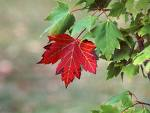 GLEBE TREES AND SHRUBS
GLEBE TREES AND SHRUBS
IDENTIFICATION OF GLEBE TREES AND SHRUBS - by bark
Miscellaneous observations
warty = red elderberry
shreddy = silver maple (broad, often diagonal), ironwood (narrower strips, vertical), white elm (a little)
plates peeling off at edges = sugar maple, red maple
purplish brown with white horizontal lenticels = Japanese lilac
evergreen with purplish hue = hemlock
narrow, high intersecting ridges with broader valleys = Siberian elm and other elm
broader ridges intersecting, yellow brown bark = eastern cottonwood
diamonds, esp at base = ashes
white, nonshredding, black triangles beneath branches = European birch
white bandaged tree = trembling aspen, poplar
rocky mountains with yellow lichen in valleys = black walnut
dark peeling birch-like = European buckthorn
orange, especially higher up on branches = Scotch pine
harlequin black and white plaques = Ponderosa pine
spongy ridges = hackberry
pinstripe = younger Norway maple
bronze = flowering crabapple
cracking and shredding even on small trees = flowering crabapple
cracking in young trees = honey-locust
beige bark with paler unattractive striae = Manitoba maple
old elephant lumpy warty skin = Manitoba maple - big older trees
dark, smooth and even but with small darker areas and "claw-scratches" of pale = purpleleaf sandcherry (Cis)
Observed types of bark
Linear strips of bark, loosening at sides or top and bottom
Silver maple = loosens somewhat at top and bottom; often light grey
Red maple = can be identical; maybe strips are somewhat shorter
Sugar maple = more irregular and loosens from the sides
Slippery elm = can look very similar to either; strips seem thinner and flatter. Look
for more typical elm basket-weave diagonal strips near base, sometimes present
Corduroy bark
Eastern cottonwood = mature trees heavily furrowed well up into tree
Oak = elevations are flattened somewhat; continues well up into tree
Linden = looks more like slit with knife in many cases
Norway maple = more pinstriped than curderoy
Willow
E-mail error reports.
 GLEBE TREES AND SHRUBS
GLEBE TREES AND SHRUBS GLEBE TREES AND SHRUBS
GLEBE TREES AND SHRUBS